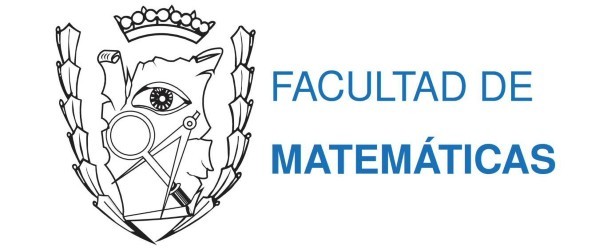Modelización de problemas: ejemplos
¿Para qué están capacitados los estudiantes del Grado en Matemáticas cuando acaban la carrera? En esta sesión, varios estudiantes que el curso pasado cursaron la asignatura "Laboratorio de modelización" expondrán algunos de los trabajos que tuvieron que realizar en dicha asignatura. Cada uno de los trabajos será brevemente expuesto en aproximadamente 15/20 minutos, tras los cuales los asistentes podrán hacer preguntas.
Cuándo: Miércoles, 15 de febrero de 2023, a las 13:00
Dónde: en el salón de actos
PRIMERA MINI-CHARLA:
Un modelo de competición entre especies: el principio de exclusión competitiva
F. Unai Caja y Javier Alarcón
According to Gause's competitive exclusion principle, no two species can coexist in the same environment if they compete in every aspect of their activities. This is the phenomenon we have chosen to study. The model on which we have based our project was described by Gause in his article "The struggle for existence", published in 1932. We have updated his results with current techniques and provided theoretical foundations for them. We have also analyzed the experimental data obtained by Gause. This model has some similarities with the famous Lotka-Volterra model, proposed in the mid-twenties to explain why the amount of collected fish for human consumption had decreased in some Mediterranean ports after the World War I, in apparent contradiction with the fact that fishing had decreased as well due to obvious reasons.
SEGUNDA MINI-CHARLA
Pagando facturas en el ayuntamiento de Murcia
Puri Hernández, Antonio Illueca y Mercedes Flores
The aim of this project is to provide Murcia City Council with a model capable of minimising the average payment period, i.e. to reduce the delay in the payment of the debt that the City Council has with its suppliers. To do this, we will explain the whole process that an invoice goes through from the moment it is received until it is paid. We will solve the problem on a monthly basis, but splitting it into two subproblems: one for each fortnight of the month. Part of the complexity lies in linking the two subproblems in a coherent and optimal way, but AMPL allows us to do so.
TERCERA MINI-CHARLA
Cableando Murcia
M. Isabel Conesa + Jorge Martínez
How to connect Floridablanca and Vistalegre centrals using the underground cable network? We can access to the network through chambers where the general cable can travel through. In addition to the chambers, two types of cable are available: Type512 cable made of 512 fibres and Type256 cable made of 256 fibres. Between adjacent chambers there exists tunnels of different sizes. We will distinguish between wide tunnels, where we can fit up to 512 fibres (in other words, one type512 cable and one or two type256 cables), and narrow tunnels where we can only fit 256 fibres (in other words, one type256 cable). One of the request the company made was that there could only be up to a maximum of 1024 fibres connected to a chamber. How to do the connection in order to save money?







